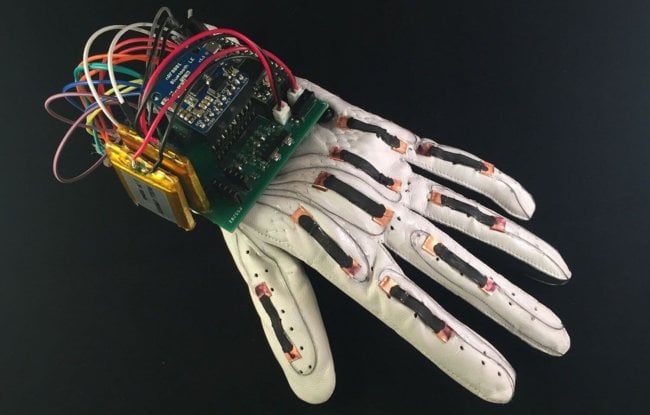
Engineers from the University of California, San Diego have developed a smart glove that is able to convert the alphabet of American sign language in text as well as to control brush virtual characters. The device was named “The Language of Glove” and the production of it is funny money – just $ 100. Most parts are for peanuts purchased at any electronics store.
In addition to the ability to convert the gestures into letters, the researchers have given your gadget support for a variety of applications for virtual and augmented reality. With the help of this device you can remotely control manipulators in the form of human hands, and make many other very useful actions. Previously, several teams of researchers have presented similar projects. The uniqueness of this particular glove is its budget and that its sensors are made of stretchable materials. This development may encourage other developers to create similar devices with a new, even more impressive capabilities.

Stretchable sensors change their resistance when they bend or stretch. Relaxed brush is mapped to a system with a value of “0” and a clenched fist with “1”. When it comes to decoding the alphabet of American sign language, the researchers had to create a binary code based on the number of tracked joints of the hand. For example, if we are talking about the letter “A” — thumb straightened, and all the other compressed code is “011111111”, and the letter “B” — when the thumb is bent and all the others rectified, the code will have “100000000”. The glove had to also add an accelerometer and a pressure sensor to distinguish letters like “I” and “J” — they have different gestures, but the same code.
At the moment the team is working on the next version of their gloves. On assurances of developers, it will allow to feel the touch to the virtual objects during VR gaming, or control of robotic manipulators with built-in pressure sensors that send back signals contact. In the future, the glove is also possible to attach a voice synthesizer to sign language voiced through built-in speakers, or smartphone. All information about the device was published in the journal PLOS ONE.
Created an inexpensive glove that converts sign language to text
Sergey Grey